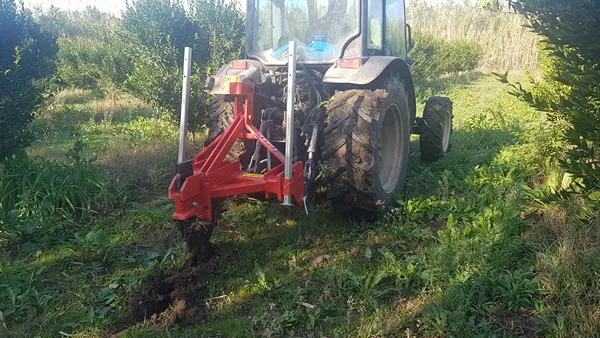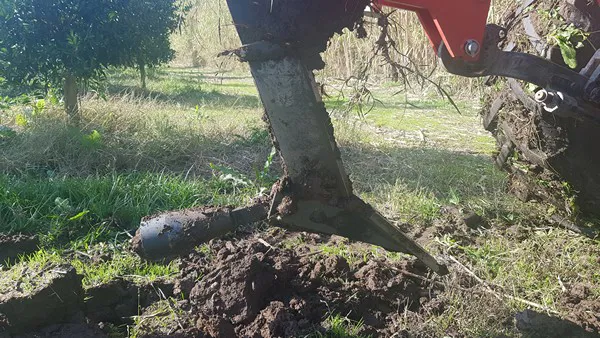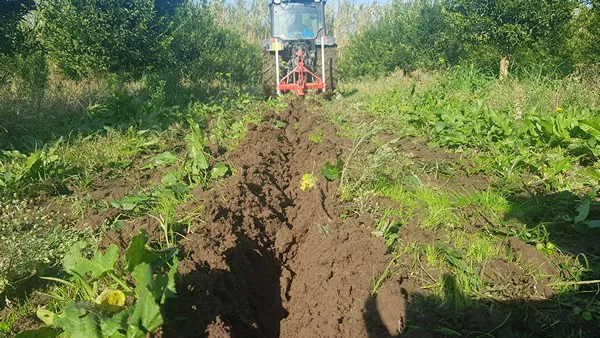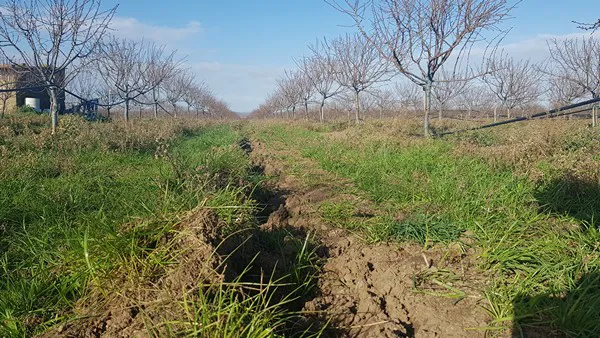Mole plows for soil aeration have been used for over half a century thanks to high power machines, and they continue to be valid when looking for the right balance between soil humidity and oxygen, which is vital for roots and organisms.
Due to the effect of gravitational force and atmospheric agents, soil tends to compact and become less welcoming. The periodic opening of a deep and narrow crack helps increase permeability without overhauling the delicate balance existing between the living part (organisms, mirco-organisms, roots) and the mineral and organic part.
Agronomist Vito Vitelli explains why this piece of equipment is important for the management of an arboretum.
 Tractors should be at least 80 cc to use a good mole plow.
Tractors should be at least 80 cc to use a good mole plow.
"This plow makes a central slit between the two rows where there are no roots, around 70-80 cm deep. The operation must be carried out only once a year for citrus fruit, peaches, persimmons, hazelnuts, olives, etc. The purpose is to enable soil aeration in grounds with a thick turf. The ideal period is between November and late February, where there is more need to get rid of excess water."
 Mole plow: a frame hooks to the tractor and a processing organ made up of two extremities. A ball at rear helps define a drainage channel.
Mole plow: a frame hooks to the tractor and a processing organ made up of two extremities. A ball at rear helps define a drainage channel.
Mole plows feature a ball at the rear. There are multiple models on sale. "The effectiveness of the operation depends on two things: the distance between the two rows and the depth of the slit. This means that the smaller the distance between the two rows and the deeper the slit, the most effective the operation. Best results are obtained when the tool is used with mulching films."
 Mole plow used in a citrus fruit grove within a humid environment..
Mole plow used in a citrus fruit grove within a humid environment..
A lack of soil aeration could be a problem over the years, as the soil tends to compact as a consequence of non-cultivation or due to the passage of vehicles.
 Mole plow used in an almond grove
Mole plow used in an almond grove
"The operation should be carried out even if fall and winter are particularly dry. In fact, if the soil is dry, the slit favors an increase of reservoirs, especially during abundant precipitations. The water flows on the turf without eroding it and seeps into the ground when it encounters the slit made by the mole plow, feeding the water resources in the subsoil. However, this operation should not be carried out in the summer, when the soil already loses a lot of humidity due to the high temperatures."
For further information:
Agronomo Vito Vitelli
+39 3392511629
[email protected]
vitovitelli.blogspot.com
